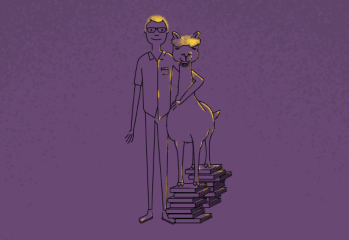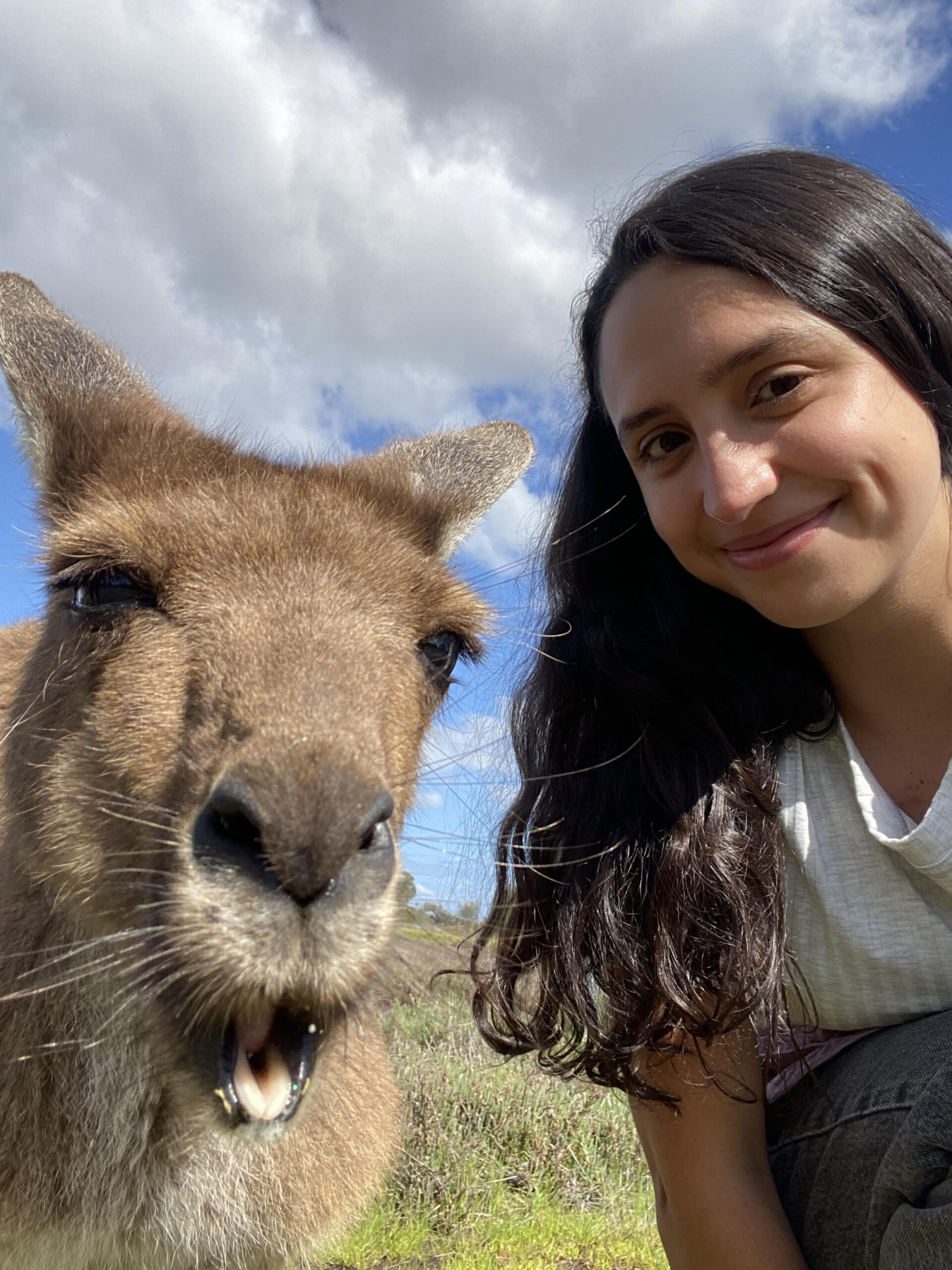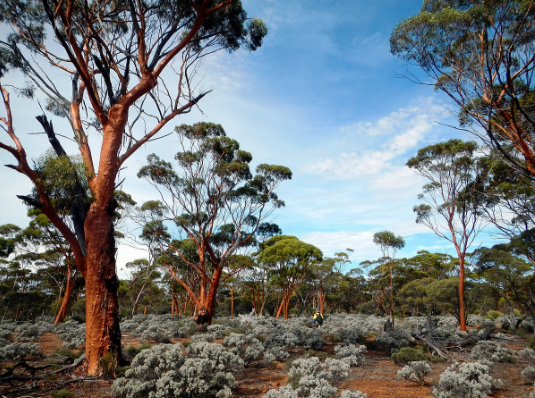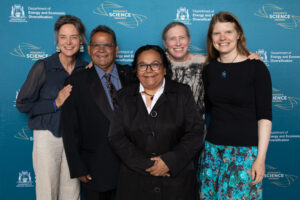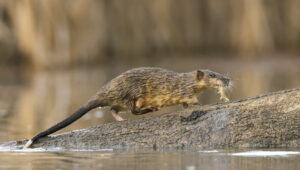As a biologist from the Neotropics, the lure of exotic bushlands and creatures drew me to ‘the land down under’.
I was particularly excited to see marsupials different from our opossums and the deadly creatures Australia is world-renowned for.
When I arrived in WA, I had no idea I was in for such a treat. I soon learned about native plants and animals that only occur here – like kangaroo paws, numbats and Carnaby’s black cockatoos, to name just a few.
Thus began a bucket list of plants and animals that grows longer with every day I spend here.
But how did these species originate? Why do they only occur in WA and nowhere else on Earth – or even Australia? And what makes WA’s fauna and flora distinctive?
A PLACE LIKE NO OTHER
Biodiversity refers to all the lifeforms found in a place – plants, animals, fungi, microorganisms and genetic diversity included.
Biodiversity hotspots are locations with a large number of species found nowhere else in the world, which are experiencing rapid habitat loss.
Australia has two internationally recognised biodiversity hotspots: the coastal forests of Eastern Australia and the Southwest Ecological Region (or Kwongan).
Caption: Map of the Southwest Ecological Region
Credit: Nemetsy via Wikimedia Commons
This hotspot extends more than 356,000km² from Shark Bay to Esperance. It contains some of Australia’s rarest and most endangered species.
While the biodiversity numbers in the region are striking, more fascinating are the species found exclusively here. They are a testament to how unique this place is and a reminder of how critical it is to preserve it.
DIVERSITY AGAINST ALL ODDS
To understand why WA’s biodiversity is so unique, we need to start at the very beginning – the land.
WA’s landscape is mostly flat, with nutrient-poor soils and a Mediterranean climate. This means hot, dry summers and winters (and autumns) with frequent, heavy rainfall.
These geological and climatic conditions have shaped the unique habitats in WA. This includes the mesic biome in southwestern WA, characterised by sclerophyllous vegetation – plants with hard leaves adapted to the heat and long periods of drought.
Studying the mesic biome helps us to understand the origin and evolution of Australia’s biodiversity.
For instance, several plant families, as well as some lineages of Australian birds (particularly songbirds) and marsupials originated under mesic conditions around 30 million years ago.
This includes species found exclusively in WA.
A MATTER OF ENDEMISM
Endemism is an important component of biodiversity hotspots.
Endemic species are native to a place and have a limited distribution because they only occur naturally in that location.
In WA, around 52% of the 8,000 plant species in southwestern WA are endemic to the state. This includes 62 banksia species, 11 kangaroo paw species and the jarrah and marri eucalyptus trees.
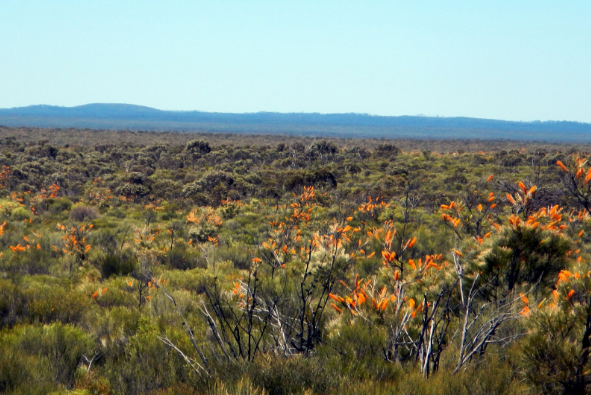
Credit: Keren Gila (CC BY-SA 4.0)
The Kwongan is also home to 12 endemic mammal species, including the honey possum, the quokka and the numbat, as well as 15 endemic bird species.
The list doesn’t stop here. Some of Australia’s rarest species live in WA’s southwest, including its most endangered reptile (the western swamp tortoise) and marsupial (Gilbert’s potoroo).
Endemism makes WA unique, and we have extremely high rates of it.
REMAINS OF A SUPERCONTINENT
To understand WA’s high level of endemism, we need to go back in time 250 million years. The seven continents we know today do not exist – only the supercontinent Pangea.
What we now know as Australia is still embedded in Gondwana, the southern portion of Pangea.
Now fast forward 96 million years. Gondwana is starting to break up and Australia becomes isolated from the supercontinent. Yet its southwest remains stable despite the geological changes occurring at the time.
This means species in the southwest have evolved without major extinctions and have prevailed or diverged in the stable conditions of the region.
It also implies that southwestern WA is an assortment of old and new groups of species.
Some of the older endemic genera include the endemic mite harvestmen, which originated during the Mesozoic era (between 252 and 66 million years ago), and the western swamp tortoise.
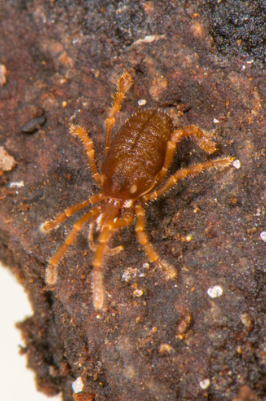
Credit: Gonzalo Giribet via iNaturalist (CC BY-NC 4.0)
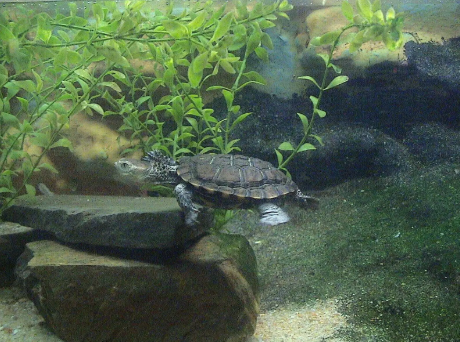
Credit: Bahudhara (CC BY-SA 3.0)
Some of the ‘younger’ species include the red-capped parrot, the honey possum and the keeled legless lizard, which originated during the mid-Oligocene (around 33 to 23 million years ago).
IS THERE ANYBODY OUT THERE?
Many species in southwestern WA experienced divergent evolution. This is when related populations develop different traits from one another as they start occupying different habitats.
For example, the red-capped parrot diverged from the mulga parrot and became a different species around 11 million years ago when its territory started to dry up.
The mulga parrot is considered endemic to South Australia, while the red-capped parrot is endemic to WA.
(Images 5 and 6, side by side)

Credit: Jean and Fred Hort (CC BY-SA 3.0)
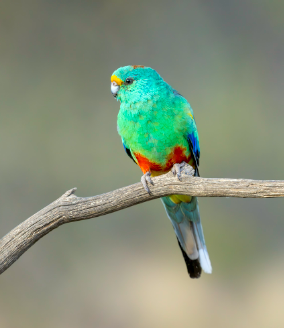
Credit: David Cook (CC BY-NC 2.0)
The aridification of southern Australia led to the formation of the Nullarbor Plain, a limestone plateau that extends 750 kilometres between central Australia and the south coast.
The Nullarbor Plain became a barrier that isolated southwestern from southeastern Australia during the Miocene.
This separation caused various cases of allopatric speciation, the formation of species caused by a geographical barrier.
Geographic barriers restrict gene flow between places, and species can evolve independently from one another – even into new species or subspecies.
Another example of allopatric speciation by the Nullarbor Plain is the heath mouse, a rodent found in southwestern WA, southwest Victoria and southern WA.
Scientists have studied the mice populations in these three regions and found they are distinct subspecies separated around 1.4 million years ago.
POLLINATION FOR DIVERSITY
Geographic isolation has helped shape the unique biodiversity in the Kwongan, but it didn’t act alone. Pollination also played a key role.
Pollinators feast on the nectar of flowers. In doing so, they collect and transport pollen to other places and flowers. This increases plant diversity and abundance.
The need for pollination has driven unique adaptations in plants and influenced their evolution.
For example, it is believed the curved shape of kangaroo paw flowers evolved to encourage birds such as honeyeaters, wattlebirds and spinebills to pollinate them.
Some banksias have potentially developed specific characteristics to attract mammal pollinators, including the endemic honey possum, because they make significant contributions to their pollination and fruit production.
These characteristics include hidden and scentless flowers growing at ground level.
More importantly, the numbers of this endemic marsupial vary according to the supply of nectar in native plant species like banksias.
Endemic pollinators need endemic plants (and vice versa) to sustain each other. But so do we.
AN ECOSYSTEM UNDER THREAT
These unique species only found in the Southwest Ecological Region face several threats.
Climate change is one of the key threats to the Kwongan.
Since last century, annual temperatures continue to increase while rainfall dwindles.
Land clearing for agriculture, invasive species like foxes and feral cats, habitat fragmentation and disease are all contributing to the degradation of one of Australia’s most valuable ecosystems.
To know is to care, as the saying goes.
Unless the threats facing the Kwongan are understood and addressed, this hotspot might become a distant memory to future generations.
